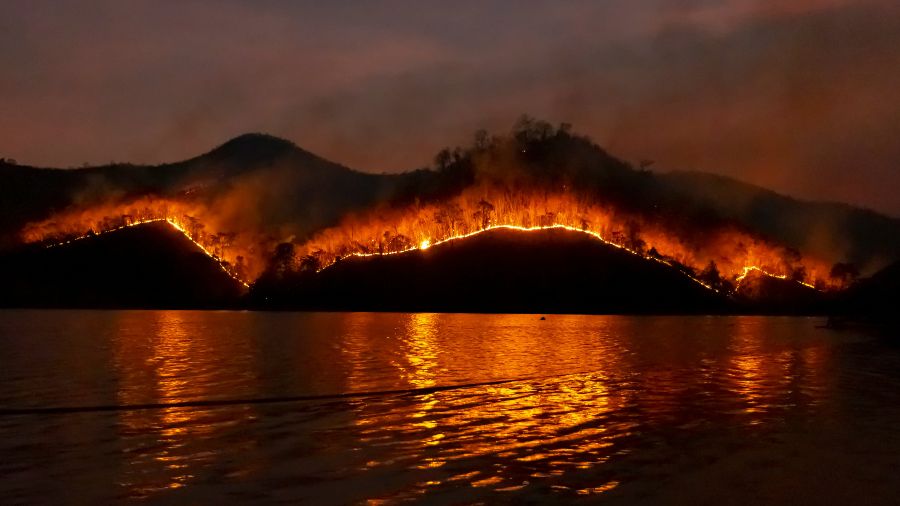The Conference of the Parties’ 30th instance, 10 – 21 November 2025, offers important implications for DMOs and CVBs. We did the homework so you can focus on refining credible, authentic messaging around it to capitalize on its debates, decisions, and media buzz.

Why COP30 Matters
-
It’s a high-visibility global event
COP30 marks the 30th Conference of the Parties under the United Nations Framework Convention on Climate Change (UNFCCC), a milestone moment.
For the host destination (Belém / Brazilian Amazon region) and related tourism or destination stakeholders this means exceptional media, stakeholder and stakeholder-attention.
-
It has thematic alignment with forest, biodiversity, resilience and nature-based solutions
As it’s hosted in the Amazon region, COP30 places strong emphasis on forests, biodiversity, Indigenous peoples, adaptation/resilience (not only mitigation).
So destinations with nature-rich, vulnerable ecosystems have new relevance in tourism and destination marketing strategies tied to sustainability.

-
It explores the shift from promise to implementation
Commentary suggests that COP30 is less about new pledges and more about delivering results, i.e., “what remains to be done”.
For DMOs, this underlines the importance of operationalising sustainability rather than simply creating image-based marketing.
-
It’s also a platform for non-state actors and business/private sector engagement
COP30’s “Green Zone” and “Business Pavilion” show that besides government negotiators, there are spaces for civil society, businesses, destinations to engage, showcase innovations, form partnerships.
For destination marketing, this means opportunities to feature sustainability credentials, form alliances and leverage visibility.
How Tourism and Events’ Organisations Can Leverage COP30
How can DMOs/ CVBs use this significant event to their advantage with transparency, credibility, and authority?
Strategic/Brand Positioning
- A destination can use COP30 as a reference point or “anchor” for its marketing: e.g., positioning a destination as a more sustainable destination using GDS-Index ranking or participation, as an ecosystem-rescue partner, or as part of the nature-based-solutions economy.
- The fact that COP30 is taking place in a region of high environmental value (the Amazon jungle, a huge carbon sink and biodiversity enclave spanning multiple countries) means destinations elsewhere can mirror this to emphasise their own natural/heritage assets, resilience credentials or climate-adapted offerings.E.g. “Like the #COP30 host city, we are surrounded by nature, in our case, in the form of ancient wetlands and carbon-capturing peat bogs, both of which we actively protect and restore through dedicated conservation programmes including wildlife bridges.”
- Marketing messages should shift from the problematic, vague “we’re green” to “we’re delivering credible sustainability/resilience” (with details to validate this, like your destination sustainability strategy or climate action report) aligning with COP30’s emphasis on results.
Partnerships and Stakeholder Engagement
- DMOs and CVBs can engage with COP30-related side events, pavilions, and business hubs to raise the destination’s profile among a global sustainability-aware audience.
- They can collaborate with local government, tourism industry, Indigenous/local communities to shape experiences centred on this COP’s key themes – climate action, biodiversity, culture.
- Networking around this event or its hubs may bring new investment (green tourism infrastructure, sustainable hospitality, conservation tourism) and new markets.E.g. travellers looking for carbon-conscious locations or companies/associations seeking more climate-conscious host cities for their next event.
Destination Product and Experience Development
- It’s important to ensure a destination’s offering aligns with broader sustainability narratives emerging at the gathering and in related news headlines. GDS-Index participants have vetted sustainability benchmarking results aligned with the UN SDGs and other frameworks and standards, so can leverage their achievements listed within it with confidence.E.g., lower-carbon travel options, nature-based activities, community-benefit tourism, adaptation/resilience messaging.
- Infrastructure may need to be evaluated for resilience (climate impacts), accessibility, and inclusivity as COP30 brings more attention to these.
- DMOs can develop authentic stories and immersive experiences around climate-action, environmental stewardship, and local culture, to appeal to travellers whose values align with COP30 themes. CVBs can do the same for their target market and customer base.
Marketing and Communications
- Your content marketing can leverage COP30: e.g., “In the year of COP30, our destination commits to …”, highlight climate-action milestones, host side-events, and showcase local innovation. Use your GDS-Index results or join today.
- Target segments: appeal to travellers interested in or associations that value and support sustainability, nature, culture, adventure, climate-conscious tourism.
- Authenticity matters: given COP30’s focus on credible implementation as well as regulation emerging across the earth, greenwashing will be increasingly challenged. DMOs must ensure credibility and transparency in their messaging, and we have a Masterclass for your whole team or organisation to support that.
Risk Management and Operational Readiness
- Major global events like COP30 bring scrutiny as well as attention, and to avoid the spill over from the buzz around this event, destinations must ensure sustainability commitments are genuine, rather than hopeful or aspirational, and operational risks (overtourism, ecosystems under strain, inequitable benefits) are better managed. Talk to us today about bespoke solutions for your event or destination sustainability challenges.
- The “host destination” (Belém) is facing accommodation/logistics challenges (bed capacity, cost, inclusion) which shows how infrastructure, access, and affordability matter. Make sure you’ve audited your own, and that you have the numbers available to prove it, or talk to us about bespoke measurement and reporting for your city, region, or event.
- Aligning with COP30’s adaptation/resilience agenda, and to be better prepared for possible crisis, DMOs can consider their destination’s climate-resilience (in terms of major/unprecedented weather events, potential or actual ecosystem degradation).
Practical Steps for DMOs
1. Take inspiration from COP30 and action:
Audit and articulate your sustainability credentials
– Map what your destination is doing (or planning) in climate adaptation, nature conservation, community engagement, lower-carbon tourism.
– Prepare legitimate, data-supported case studies or stories that tie into global climate narratives, as COP30 provides media and stakeholder interest.
– Use these in marketing materials, pitches, partner outreach.
2. Align your product offering with climate-smarter tourism
– Develop experiences/programmes that highlight and support the protection and restoration of natural ecosystems, first peoples/indigenous/local culture, and conservation efforts.
– Ensure infrastructure and service providers support lower-impact, more inclusive and resilient tourism and business events.
– Consider developing “climate-smarter tours” or “nature-resilience experiences”.
3. Engage in partnerships / networks
– Identify involvement opportunities in COP30 side events, pavilions, business forums (if relevant) or follow-on events, e.g. the OECD Virtual Pavilion, open to all, which offers a variety of vital sessions with a networking option, all free)
– Collaborate with national tourism bodies, local government, conservation NGOs, indigenous groups to build more conscious, credible offerings.
– Seek partnerships and projects with travel industry players targeting sustainable travellers.
4. Tailor marketing communications around the moment*
– Time content and campaigns around COP30 (e.g., “As the world gathers in Belém for COP30, we reaffirm…”).
– Use digital and social media to tell stories of climate-resilience, nature protection, and community benefit.
– Target audiences increasingly sensitive to environmental/climate credentials.
* COPs take place regularly, so if you’re too late for this one, there’s the next to plan for.
5. Monitor risk and ensure authenticity
– Avoid superficial green claims. Ensure your sustainability claims are backed by data, partnerships, measurable outcomes. Here’s a Masterclass to help.
– Prepare for operational risks (e.g., infrastructure stress, natural hazards, community tensions).
– If your destination is part of the “climate tourism” space, make sure to integrate this into the overarching narrative without appearing opportunistic.
6. Leverage legacy value
– Post-COP30, there will be attention on the host region and its challenges; other destinations can ride that wave of global consciousness around climate and nature by showcasing their legacy and impact initiatives. Or you can help your whole team get to grips with it in a dedicated Masterclass.
– Consider legacy partnerships or programmes that endure beyond COP30 (ongoing sustainability initiatives, destination resilience projects) and communicate those. Or talk to us today about ways we can facilitate.

TLDR: In short, COP30 is significant for:
destination management and marketing because it amplifies the relevance of climate, nature, resilience and sustainable development in the tourism/business events sector. For DMOs and CVBs, this means a strategic opportunity and responsibility:
- An opportunity to reposition, partner, innovate and differentiate in a climate-aware marketplace;
- A responsibility to ensure that sustainability claims are genuine, that destination and host city products reflect the values of climate-resilient, inclusive tourism, and that growth is managed in a way aligned with global climate goals.
If you want to action these steps but are afraid of greenwashing:
- Consider the Destination Storytelling Masterclass for your whole team or organisation. It’s tailored to your needs and dynamically delivered.
Want more? This post goes well with:
- The real power of COP30 – a leader’s perspective
- The key to a better destination story
- The missing link in crisis planning









